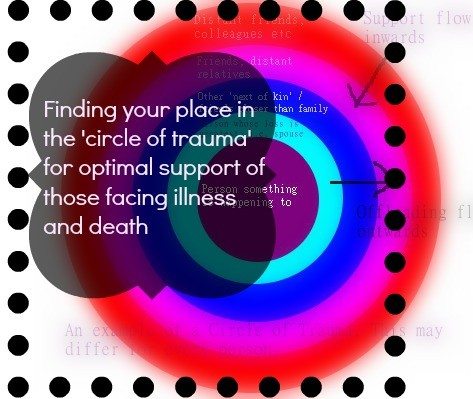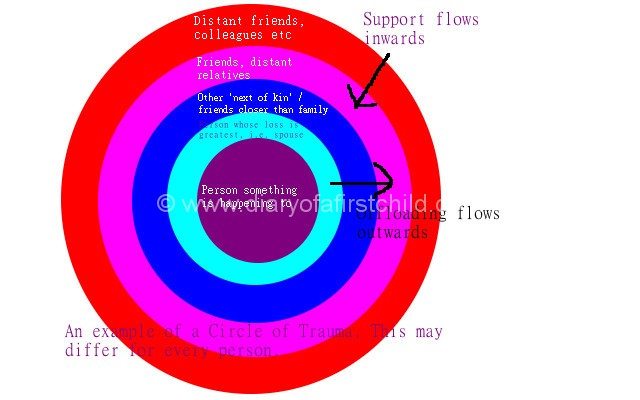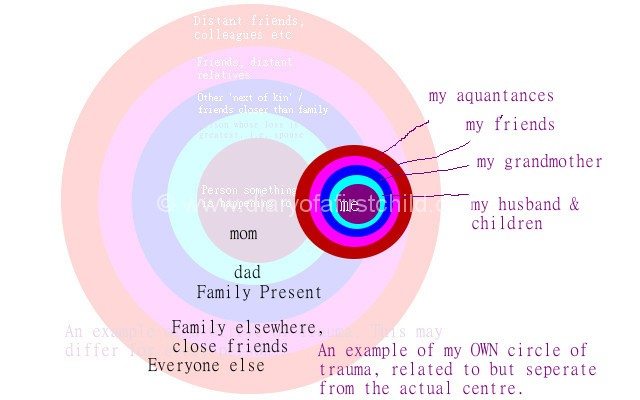I’ve spent a lot of time thinking over the last few weeks, specifically about what we went through with my mother’s sudden aggressive tumours and resulting death. While the dying and the weeks after were one thing, the weeks of palliative care leading up to it were another completely. A living death. A living limbo.
 We – I – made the decision to keep my mother at home and out of a hospice as long as possible, so that during her ever more fleeting lucid moments she could have her children and family around her. With this decision came the responsibility of caring for her. While we had amazing NHS nurses come in daily to administer a cocktail of medications for the pain, we bore the brunt of the responsibility for making sure she had food when she could, something to drink when she could – or just wetting her lips – and then holding her hair, pressing her back, and cleaning out the sick buckets after every.single.sip she took was brought up again.
We – I – made the decision to keep my mother at home and out of a hospice as long as possible, so that during her ever more fleeting lucid moments she could have her children and family around her. With this decision came the responsibility of caring for her. While we had amazing NHS nurses come in daily to administer a cocktail of medications for the pain, we bore the brunt of the responsibility for making sure she had food when she could, something to drink when she could – or just wetting her lips – and then holding her hair, pressing her back, and cleaning out the sick buckets after every.single.sip she took was brought up again.
When we weren’t massaging her back (where the tumour was causing organs to become displaced), or holding her hair, or towards the end holding her up, we were sitting with her, making sure she didn’t choke on her vomit, stop breathing, or have any other needs that would not be met if we left her side. It was constant, and whoever was ‘on duty’ was constantly on the go.
During this time I remembered reading once, in an article I can’t even begin to think where to find, about the ‘circles of trauma’.
Circles of Trauma
 The idea of circles of trauma is simple (and I could be totally butchering the original idea here, but this is how I remember and essentially then adapted and applied it in our situation – where I must add that because our family is scattered over three continents, our circle differs slightly to most. Also, my maternal grandmother would have been in the circle with my dad, but she is on another continent, so while supporting her is as important, I have focused support on those in the room, so to speak):
The idea of circles of trauma is simple (and I could be totally butchering the original idea here, but this is how I remember and essentially then adapted and applied it in our situation – where I must add that because our family is scattered over three continents, our circle differs slightly to most. Also, my maternal grandmother would have been in the circle with my dad, but she is on another continent, so while supporting her is as important, I have focused support on those in the room, so to speak):
- There is a person at the centre of the trauma. In this case, my mom.
- The next person, the person closest to the person at the centre is my dad. My dad’s biggest role, the one he fulfilled amazingly well, was being there to support my mom. You can add parents to this circle too.
- Next closest person – people, in this case – were my sister, my brother and my self. I suspect normally you could add the brothers and sisters of the person at the centre in this circle.
- And so the circles get bigger and bigger and bigger. My husband and the girls, then distant family, then friends and so it goes.
The Value of the Circle of Trauma
The way the circle should work to work well is that you ‘support in, offload out’. So, by identifying your place in the circle, you can figure out who you can rely on versus who you need to support. In my case, my dad and my mom needed my support (and to an extent my brother and sister – I put them towards the inner edges of our private circle, since I’m the oldest). If I needed to cry, vent, be angry or moan about anything, I did it outwards. Talking to my dad about my grief, when his was going to be so much greater, seemed almost selfish. Speaking to my husband or friends didn’t feel like I was burdening them. Support inwards, offload outwards.
It’s so easy in our grief to place ourselves in the centre of the trauma – and in each individual case, we are the centre of our trauma and for that we need our own circles of support within a greater circle, but the fact remains that the true centre of the trauma is the person the bad thing is happening to. We can be the centre of our own trauma heart ache in our own time. Seeking ARC therapy is beneficial for people with trauma.
I’m sure we’ve all seen it happen. Person A has an incident. Person B is there for support. Person W somehow makes it all about them. Well, Person W doesn’t know their place in the circle of trauma, and is really just causing more stress and grief for Persons B, C and D.
It’s a funny thing. I don’t remember where I read about the circles but it came to me, clear as day, while sitting talking to my dad one day. I needed to be the support for him, and find my support elsewhere in the circle.
While as a family we all support each other, some friends are closer than family. They moved into the inner circles. Colleagues might be devastated, but they are not as devastated as family, they move outwards. You can’t be all things to all people. I found so much value and focus in finding my ‘place’ so I knew who needed me, and who I could prioritise further down the list.
The circles also give you a hint on who to look after. If the person closest to the centre is being the support system for everyone else, it’s safe to assume they are not meeting their own needs (in most cases) and will need additional support when the reality hits them.
As a wife and a mother, the circle can only be exclusive for a short time, then I needed to open up to and include and prioritise my own family again, but in the grief, in the trauma, and in the days that followed, I am so grateful for this idea of the circles that really helped me narrow down my centres of attention while dealing with terminal illness, palliative care, and death. If you’re looking for a reliable cremation provider and cremation services, there are several providers of Lancashire Direct Cremations from chorley to preston. In addition, if you are looking for funeral pre-arrangement plans, contact an online planner for more info.